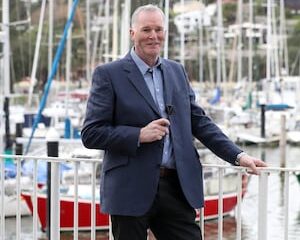Business
HeraldEX Launches Innovative Crypto Tools at Dubai Expo

HeraldEX has launched two groundbreaking tools, the Crypto Payment Gateway and the OTC Desk, at the Crypto Expo Dubai on July 14, 2025. These tools aim to simplify the use of cryptocurrencies for businesses, catering to a diverse range of sectors including e-commerce, gaming, and large-scale trading.
Designed to streamline the complexities often associated with cryptocurrency transactions, these tools facilitate fast and secure crypto payments as well as large-volume trades with minimal friction. With features like instant settlements, fiat conversions, deep liquidity, and complete confidentiality, HeraldEX positions itself as a comprehensive solution for global crypto adoption.
Key Developments and Industry Impact
“Attending Crypto Expo Dubai was a defining moment for us,” stated Aravinth Ramesh, Chief Technology Officer of HeraldEX. “We connected with industry leaders, potential partners, and users from around the world. This event allowed us to showcase our capabilities and the direction in which HeraldEX is heading,” he added.
The platform’s versatility allows businesses to accept digital currencies effortlessly, while traders can manage significant OTC deals with top-tier liquidity and speed. Users benefit from features tailored to meet their every crypto need, making HeraldEX a trusted choice for those looking to advance their cryptocurrency ventures.
“We built this to be the obvious choice for anyone handling crypto,” said K. Balasubramanyam, CEO of HeraldEX. “With so many features integrated, whether it’s accepting payments, executing large trades, or managing assets, our platform enables users to do it all seamlessly,” he emphasized.
Leadership and Vision
K. Balasubramanyam brings over 20 years of experience in capital markets and finance to the company, while Aravinth Ramesh has extensive expertise in developing technological systems utilizing artificial intelligence and blockchain. Recognizing that cryptocurrency was not initially designed for practical business applications inspired their vision for HeraldEX.
Currently, HeraldEX is experiencing steady growth, with more businesses joining its platform across Europe, the UAE, and Australia. The company adheres to local regulations in each region while focusing on developing real-world tools that support businesses in their cryptocurrency endeavors.
For further information, please contact:
Aravinth Ramesh, CTO
Website: herald.exchange
Email: [email protected]
Photo: HeraldEX Image
Logo: HeraldEX Logo
-

 Sports1 month ago
Sports1 month agoNetball New Zealand Stands Down Dame Noeline Taurua for Series
-

 Entertainment1 month ago
Entertainment1 month agoTributes Pour In for Lachlan Rofe, Reality Star, Dead at 47
-

 Sports1 month ago
Sports1 month agoSilver Ferns Legend Laura Langman Criticizes Team’s Attitude
-

 Entertainment2 months ago
Entertainment2 months agoKhloe Kardashian Embraces Innovative Stem Cell Therapy in Mexico
-

 Sports2 months ago
Sports2 months agoGaël Monfils Set to Defend ASB Classic Title in January 2026
-

 World3 months ago
World3 months agoPolice Arrest Multiple Individuals During Funeral for Zain Taikato-Fox
-

 Politics2 weeks ago
Politics2 weeks agoNetball NZ Calls for Respect Amid Dame Taurua’s Standoff
-

 Entertainment3 weeks ago
Entertainment3 weeks agoTyson Fury’s Daughter Venezuela Gets Engaged at Birthday Bash
-

 Sports3 weeks ago
Sports3 weeks agoHeather McMahan Steps Down as Ryder Cup Host After Controversy
-

 Entertainment3 weeks ago
Entertainment3 weeks agoTyson Fury’s Daughter Venezuela Gets Engaged at Birthday Bash
-

 World2 weeks ago
World2 weeks agoNew Zealand Firefighters Plan Strike on October 17 Over Pay Disputes
-

 Sports2 months ago
Sports2 months agoTragic Death of Shane Christie Sparks Calls for Player Safety





















